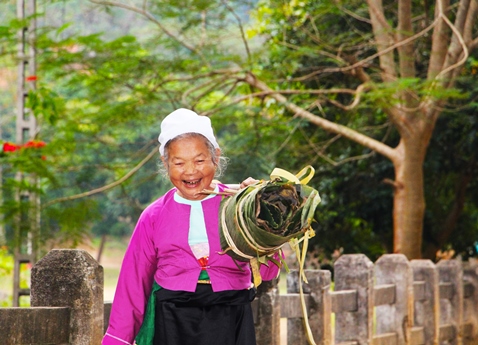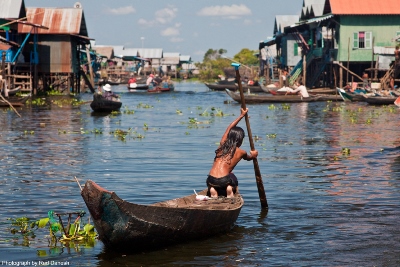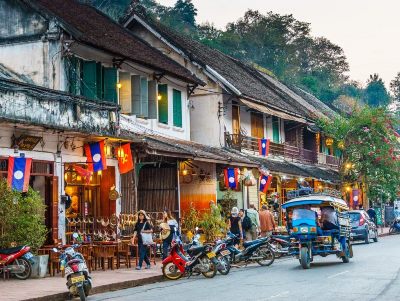
Floods in Vietnam: How Incoming Agencies Adapt
The year 2025 is shaping up to be one of the most affected by extreme weather events on our planet. In Vietnam, the succession of three powerful typhoons — Ragasa, Bualoi, and Matmo — that struck between late September and early October caused significant human and material damage. Hardly had the country recovered when the central region, particularly around Huế, was hit in recent days by new floods in Vietnam — some of the most severe of the decade.
Rainfall reached record levels: over 1,000 mm in many areas, with peaks such as Mount Bach Ma (2,785 mm), Khe Tre (1,484 mm), and Huong Son (1,270 mm). These figures illustrate the severity of the storms that paralyzed daily life and disrupted transportation between provinces.
In light of this situation, tension is rising among international tour operators and travel agencies promoting Vietnam. The images and reports broadcast by foreign media have understandably caused concern. However, on the ground, we — the DMCs in Vietnam — are doubling our efforts to ensure travelers’ safety and to flexibly adjust itineraries. Our goal is to allow ongoing tours to continue under the best possible conditions while maintaining participants’ comfort and peace of mind before they move on to milder regions in the North or South of the country.
In this article, we will answer the main questions currently being asked by our partners and their clients regarding the floods in Vietnam and their impact on travel.

Hoi An – Floods in Vietnam 2025. Source: Tuổi Trẻ (https://tuoitre.vn/)
Table of Contents
ToggleWhen do floods occur in Vietnam?
Vietnam experiences two main flood seasons corresponding to the country’s different climatic zones. Floods in Vietnam occur mainly during the rainy and storm season, between June and December, with marked regional variations.
In Central Vietnam, the flood season extends from September to December, peaking between September and October. This is also the period when storms from the South China Sea strike the country most frequently. Every cold front descending from the north, combined with oceanic humidity, causes long periods of heavy rainfall.This year, the persistent activity of the continental anticyclone has intensified the phenomenon, keeping the weather humid and unstable. Weather forecasts even indicate the possibility of new tropical depressions or storms in early November, which could directly affect the central and southern provinces.
In southern Vietnam, the rise of the waters — locally called mùa nước nổi (“rising water season”) – takes place from August to November. Here, floods in Vietnam take on a more peaceful aspect: they fertilize the rice fields, nourish the plains of the Mekong Delta, and bring an abundance of fish and tropical fruits. It is a season that is both generous and vibrant, far from the ravages observed in the Center.
In the north of the country, the heaviest rains fall between June and October, particularly in July and August. In the mountainous areas of the northwest, this period is often accompanied by landslides. For safety reasons, we strongly advise against traveling to this region during these months.

Floods in Vietnam
What are the reasons for the floods in Vietnam?
Every year, floods in Vietnam hardly surprise the inhabitants, as they are part of the natural cycle of the seasons. However, for the past two years, and even more so in 2025, the country has experienced episodes of exceptional intensity. Several factors, both local and global, explain this aggravation.
The underlying causes according to international scientists
According to the South China Morning Post, researchers point to two main culprits: the massive production of fossil fuels and rapid urbanization, which infrastructure struggles to keep up with. This combination makes Vietnamese cities — especially those in the central region — increasingly vulnerable to torrential rains.
Super Typhoon Ragasa, considered the most powerful in the recent history of the South China Sea, illustrates this disruption. Its path followed unusually warm ocean areas, allowing it to gain strength in less than 24 hours, with winds exceeding 200 km/h. According to CNN, the average ocean temperature is hitting records for the eighth consecutive year. A warmer sea provides considerable energy to tropical storms, turning them into true meteorological monsters.
At the scale of South Asia, humid air masses from the Indian Ocean and the Arabian Sea collide with the Himalayan mountain range. This clash causes the formation of dense clouds that unleash torrential rains. As Indian climatologist Roxy Mathew Koll from the Institute of Tropical Meteorology explains, “The Himalayan, Karakoram, and Hindu Kush ranges are extremely fragile; their steep slopes encourage violent and sudden torrents.”
Scientists agree that the increase in extreme rainfall, the overexploitation of groundwater, and weak infrastructure are the main causes of these floods in Vietnam. All of them, without exception, are linked to global warming, which is now disrupting even the regular rhythm of the seasons.
Explanations from Vietnamese meteorologists
From the perspective of Vietnamese experts, floods in Vietnam — particularly in the central region — result from a combination of closely connected natural and human factors. In recent years, rainfall events have become more intense, longer-lasting, and more destructive.
Exceptionally intense rainfall
According to the national meteorological services, Central Vietnam is literally saturated with water. Daily rainfall exceeding 100 mm over several weeks is enough to saturate the soil and trigger landslides. In 2025, precipitation reached record levels, turning this narrow region wedged between mountains and the sea into a vast “natural basin.” It is this enormous and relentless volume of rainwater that has produced the most spectacular floods in Vietnam.
Deforestation, a major cause
Authorities also point to massive deforestation as an aggravating factor. The loss of vegetative cover deprives the soil of its capacity to retain water. Normally, one hectare of forest can absorb up to four cubic meters of water: a part seeps into the ground, another evaporates, and the rest flows slowly into rivers. Without trees, the rains turn into violent torrents that rush down the slopes, sweeping away homes, crops, and sometimes entire lives.
Fragile and restrictive topography
The very geography of Central Vietnam makes the region extremely vulnerable. Crossed by the Truong Son range, this narrow strip of land is characterized by short and very steep rivers. When it rains, the water brutally rushes towards the coastal plains. Sand dunes and coastal spits, parallel to the sea, slow down the evacuation, inevitably causing sudden and extensive floods.
Insufficient hydraulic infrastructure
Another often underestimated factor is the fragility of dams and hydraulic structures. Their construction and maintenance sometimes lack rigor, from planning to environmental management. During periods of heavy rainfall, these structures become overloaded, unable to contain the massive volumes of water, thereby increasing the risk of collapse or landslides in downstream areas.
Finally, recent seismic tremors recorded in some central provinces have further weakened already unstable soils. With water saturation, the slopes easily erode, causing localized collapses and further worsening the scale of floods in Vietnam.

Optimistic travelers during the rainy season in Vietnam and our guide Hieu Nhan
How do local travel agencies respond to floods in Vietnam?
Travel agencies in Vietnam usually prepare their international partners in advance: they inform them about the country’s climatic particularities, the ideal travel seasons, and those when weather conditions may become more unpredictable. However, despite all precautions, some natural phenomena remain unforeseeable. When floods in Vietnam occur, tours may be disrupted — sometimes slightly, sometimes more seriously.
In these situations, DMCs (Destination Management Companies) in Vietnam adopt different strategies. Some immediately notify their partners to assess possible losses and jointly find solutions. Others prefer to manage the situation on-site and communicate updates only when necessary.
For our part, we follow a clear methodology, based on responsiveness and transparency:
- Immediate and continuous communication. At the first signs of flooding, we inform our foreign partners of the situation on the ground, then send regular updates on the weather evolution and potential impacts on ongoing tours.
- Local verification and anticipation. We contact our providers at each stage of the trip — hotels, transporters, guides — to assess the risks and plan alternatives for every scenario.
- Flexible itinerary adjustment. We always select the safest and smoothest solution for travelers: replacing a road transfer with a boat trip, changing hotels for an establishment located in a higher area, substituting a train with a domestic flight, or simply reorganizing the order of visits. The goal is for the trip to continue, stress-free and under the best possible conditions.
- Human support on the ground. Finally, we stand by our local teams – drivers and guides – to encourage and support them, and to empower them to convey calm and optimism to the travelers. Their well-being, both physical and moral, is essential for maintaining group cohesion and allowing everyone to continue the tour toward regions where the sky is clearing, in the North or the South of Vietnam.
Our final words,
The floods in Vietnam are not an isolated phenomenon. Throughout Asia, and even in America, the planet is entering a new phase of storms and intense rain linked to climate change. In Vietnam, this type of event is unfortunately not uncommon. Local authorities and tourism professionals are used to dealing with it. As soon as the situation improves, roads are reopened, visits resume, and services quickly reorganize.
As a DMC in Vietnam, we closely monitor the evolution of conditions and adapt itineraries in real-time to maintain the continuity of travel under the best possible conditions. If you have any questions or would like more details, please do not hesitate to write to us.
Laetitia Phuong Ha TRAN – DMC Mekong IMAGE Travel & Events















